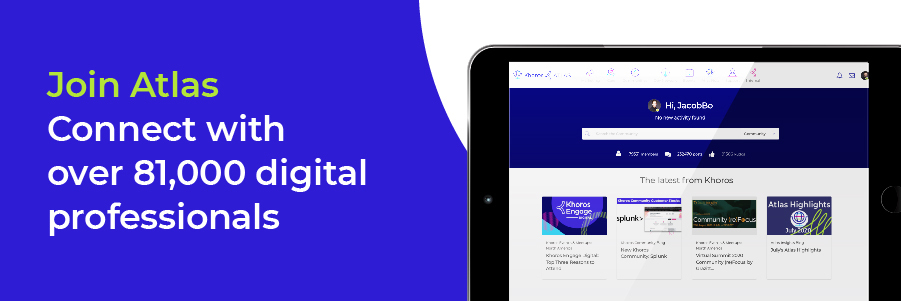 Logo
Logo
EXPERT INSIGHTS
Sep-28-2020
We put a bot on our brand community — Here’s why you should, too
Travis Berryhill, Lead User Engagement Designer
Why to add AI to your online brand community
Bots are everywhere these days, and now with modern chat driving their intelligence, that’s finally a good thing. Most customers don’t care whether their question is answered by an agent or a bot, as long as it gets answered. But one place you don’t usually find a chatbot is in a brand’s online community. The reason is that a community is supposed to be a space where humans are encouraged to ask questions and share ideas, often with a level of creativity or complexity that chatbots can’t achieve. A bot would get in the way of that… right?
Well, we know a thing or two about digital communities — and we added a bot to ours anyway. Here’s why.
1. Website visitors are cool, but not nearly as cool as customers
You want tons of visitors on your website or community, and you want them to quickly accomplish what they came for. What you don't want is for your visitors to become loiterers. It's your job to engage them so that they aren’t just visitors but leads — and eventually customers. A bot can go a long way in facilitating that.
At their core, chatbots are a conversational way to find information that has been stored on a website. Most sites currently have multiple interactive ways of finding content: search, linked content, menus inside of menus, headers, footers, forms, and much more. And for users, sometimes all these options are more overwhelming and confusing than they are helpful. Some people prefer to get information simply by having a conversation. Chatbots are designed to provide the best information experience for people who enjoy that type of interaction without having to staff 1,000 agents to respond to chats.
But, you might say, communities are already conversational experiences with actual humans. Nobody wants to talk to a bot instead!
Fair point. But how many people actually post their question on a community or end up even finding what they are looking for? The answer varies from community to community — and some are really very good at it — but no community where it’s 100%. In fact, the average bounce rate for a community is over 40% (and that is far better than the average website, where over 50% of people leave without clicking a single link). What if some of those people who left your community unsatisfied could have used a little help from a friendly and outgoing robot?

2. Being new is tough
By design, communities are more inclusive than websites, but there is still a psychological barrier to posting a question to a bunch of strangers. A community guide bot that can take your question in private will remove that barrier. This helps those who may need to ease into the idea of joining a community or who may otherwise hesitate to ask a question. And guess what? When the bot points that person to a thread with the same question and a dozen good answers, they will be more likely to ask another question. And another. Until they are ready to ask again in the forum themselves.
Here’s another reason website navigation and search don’t always work: many new visitors don't know what they don't know. So they don't know where to look or even how to ask the right question! An intelligent bot helps guide them to the right spot by understanding their questions based on learning from existing community content, semantics, and natural language processing.
3. Chatbots are navigators of community content
By helping to answer redundant questions and guiding people to the right forums, a bot helps a community avoid quite a bit of data pollution. When the same question or topic appears in many spaces, many times across a community, it can obfuscate the best answer and have a negative impact on user experience (not to mention SEO) for the entire site. This can result in a frustrating and negative first impression of the community and the brand. Bots can also help retroactively, by spotting questions that have been asked and then actually answering them.
4. It’s all about relationships
Having a bot on a site or community is all about making that first impression the best possible experience. When people have a better first experience, they are more likely to return. And that is a relationship — not a transaction. In most businesses, most of the time, people don’t decide to make a purchase the first time they visit the brand website. But they can decide not to make a purchase in an instant.
How we implemented a chatbot on Atlas, the Khoros community
1. Cross Team Strategy
As a digital engagement company, Khoros knows how important it is to engage users when they are within our services and solutions. To ensure goals for the bot were comprehensive across Khoros's needs and interests, we formed a bot team consisting of a product manager, a developer, and a conversational designer, as well as a group of Khoros internal stakeholders. We called it the "Center of Excellence Council."
The team wanted a sales and support assistant to help the sales team make new connections and assist existing customers in navigating all resources Khoros has to offer. So the first phase of development and AI development focused on Atlas (our own online community) and Khoros.com, with plans to include Khoros products later.

2. AI personality development
Studies have shown that bots with distinctive personalities drive more engagement than merely functional logic bots. Our Center of Excellence Council wanted to make sure that the distinction would help users engage by being both helpful and entertaining.
We started with the fun part of building a bot: purpose and personality. Since we named the Khoros community after the Greek titan Atlas, we decided to name the bot after Atlas’s child, Maia. Who was also the mother of the greek god of messengers, Hermes. It all fit so perfectly.
As a digital engagement platform, Khoros helps our brand partners connect with their customers. Therefore, Maia had to be a model for assisting users in connecting. We looked internally at the people who excel at connecting with customers and immediately thought of our Product Coaching team, who are known for being a delightful mix of nerdy, helpful, and thoughtful. Using those human characteristics, the Maia team built a guide to keep the voice consistent with our brand guidelines in any situation.
Still, as important as it is to give your chatbot a personality, remember to never try passing it off as human; this could appear deceitful to consumers.
3. AI flows
With a name, personality, and voice set, the Council next brainstormed about all the ways Maia could help users in their journey. They narrowed it down to four main fundamental themes to build paths towards sales, education, support, and company updates. These are the pillars for the bot to base its learning.
We gave each theme three possible offshoots that branch out into a spider web of potential issues that users might encounter. This was done by mapping outflows that would trigger tasks that Maia could perform. Instead of having each flow contain widespread activity, multiple short flows were built to work together and accomplish more important things. This approach also allows admins to edit the more popular flows over time without disrupting the overall experience. With Modern Chat’s powerful AI capabilities, short linear dialog also better positions bots to be able to learn without administrators having to program every new flow.
The future looks intelligent
The future of bots isn’t just about answering questions; it's about having the power to help humans better connect and engage with each other. It’s about starting conversations for new visitors or helping people who prefer to find answers through conversation rather than clicks. We are working towards building bots on communities that can see a question and automatically raise the attention of a superuser skilled in that area, look at a post and ensure it's in the optimum board to get answered, look at an accepted solution and recognize that this should be a knowledge base article, and beyond.











